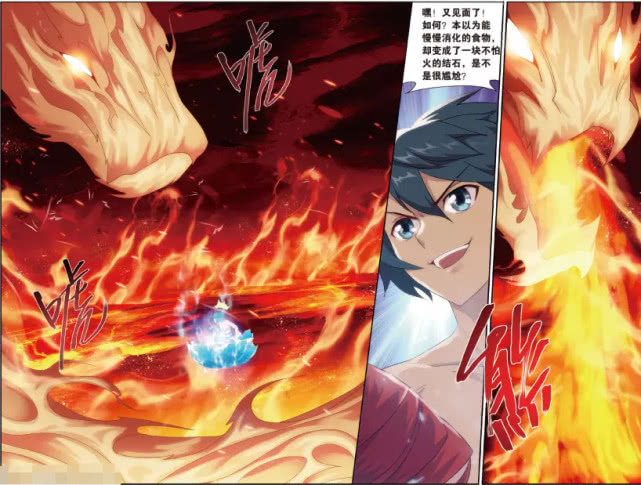濮阳东方医院治早泄靠谱-【濮阳东方医院】,濮阳东方医院,濮阳东方男科医院收费便宜吗,濮阳东方医院男科收费低,濮阳东方男科评价,濮阳东方医院治疗阳痿价格收费低,濮阳东方男科医院割包皮,濮阳东方医院妇科评价好不好
濮阳东方医院治早泄靠谱濮阳东方医院看妇科很专业,濮阳东方医院看妇科病可靠,濮阳东方医院很便宜,濮阳东方位置,濮阳东方医院做人流手术贵吗,濮阳东方妇科技术非常哇塞,濮阳市东方医院口碑比较好

The National Weather Service is projecting Southern Arizona's fire season to be more active than normal."There's leftover dry fuels from last year, and there's newly formed fine fuels," Warning Coordination Meteorologist Ken Drozd said.Above average daytime high temperatures, combined with storm systems bringing wind but no rain, and very dry conditions, are some of the reasons why the NWS projects May and June to have the more fire activity than normal.Due to a wet February, there is now more dry fuel in the region, according to Drozd. Sometimes, significant rain events leading into fire season can delay or shorten it, but that wasn't the case this year."Those new grasses that greened up from that precipitation event have now dried out again, due to the warm temperatures we've experienced lately," Drozd said."The hotter you get, the more you're going to dry things out. It just keeps things dried out unless you get some intermediate rain that'll come in, and again, there's none in the forecast right now."Last year, fires ripped through Southern Arizona from April to July, blackening landscapes and destroying homes in their paths. People from communities all through the region were forced to evacuate, sometimes on multiple occasions.The American Red Cross is urging people prepare ahead of time. Some of their tips include: 1355
The Pennsylvania Academy of the Arts, or PAFA, is the nation’s oldest art school and museum but it’s facing a new dilemma: what to do with an artist’s work when the artist is accused of sexual misconduct. The artist in question is portraitist Chuck Close. He may not be a household name to you and I, but in the art community he’s huge. He’s considered a pioneer of portrait work who rose to prominence in the 1960s who made a name for himself in the way he incorporated photography within the world of painting.But this past December, four female models accused the artist of sexual harassment, claims the Close denied in an interview with the New York Times. Close, through a rep, declined our request comment.Brooke Davis Anderson, PAFA’s museum director, had a tough call to make: what to do with a high-profile exhibit, on view in one of their most prominent galleries, filled with Close’s work.“I’m very hesitant to censor artwork,” Anderson said. She and the museum executive leadership convened their art community of students, staff, and patrons to gauge the reactions to try to fiigure out ho to handle the exhibit.“We really asked everybody what they were feeling, thinking, how they were responding,” Anderson said. “How they felt we should respond as an institution, and collectively what this meant for us.”The broader discussion is not all that new. You may recall that a few years back, “The Cosby Show” was pulled from syndication following allegations made by a slew of women against its star and creator Bill Cosby. It’s since made a slow re-emergence on small cable networks.In the past year, we’ve had to ask ourselves whether we as a society are comfortable enjoying re-runs of “Louie” on FX in the wake of comedian Louis C.K.’s admitted mistreatment of women. Or what about previous seasons of “House of Cards” now that allegations regarding Kevin Spacey have come to light?Even Pablo Picasso was known to have mistreated the opposite sex.The obvious question becomes: can an artist’s work be separated completely form the artist and their personal decisions?[,We asked Melissa Joseph and Candace Jensen, both students at PAFA who took part in the museum’s forum on what to do with the Close exhibit. “That’s like the zinger question!” Jensen said, through laughter.“Many students did want the [Chuck Close] show to come down,” Joseph added. “You just want it to go away, you know? You don’t want to have to look at it anymore.”But, she says, over a few weeks’ time her views evolved.“If you think about what’s going to be most productive for this movement, what’s going to actually move things forward, your initial emotional reaction isn’t always the right one.”Jensen interjected.“Well yeah but don’t diminish emotional responses. Emotional responses are really tied up with moral responses,” Jensen said, adding that understanding the context in which art was made is key.“Being willing to value the aesthetic decisions that were made and also be critical of the maker,” Jensen said. “So it’s not a black and white.”PAFA is not the only institution having to navigate this gray area.Seattle University recently removed a Chuck Close self-portrait hanging in a campus library.The National Gallery of Art in Washington, DC indefinitely postponed its Chuck Close exhibit that was set to open in May. A museum spokesperson declined an interview but told us in an email that “all parties involved” agreed that it was “not the appropriate time” to present the installation. Anderson made the final call for PAFA: keep the Close exhibit, but with a caveat in the adjoining gallery right next door.“The site of an exhibition isn’t where you respond by censorship or changing the project. I rather felt that what we could do because of our real estate here. We had an opportunity to have a dialogue with another project.”That other project is what they’re calling a “response exhibit,” a gallery created to force a conversation that explores gender and equality in the art community.“There are no longer town halls and town squares,” Anderson said. “So what if a museum was a site where we could say we don’t agree, and lets unpack how we don’t agree. And let’s understand how we don’t agree, and maybe that advances us a little bit.”Anderson pointed out some of the highlights of the responsive exhibit, including a timeline regarding how and when the art world can become “an equitable space.”“How do we get more women in leadership positions? Women artists and collections, people of color, trans people, how do we create that balance?” 5181

The percentage of Americans who say they would probably or definitely get a COVID-19 vaccine when one becomes available has sharply decreased in just the last few months.A survey done in mid-September by the Pew Research Center found only 51 percent of respondents would definitely or probably get the vaccine when one became available. A similar survey done in May found 72 percent of participants would definitely or probably get the vaccine. The 21 point drop was all in the “definitely would get the vaccine” category, according to the data.According to the data, a large drop in the number of American who would get the vaccine was seen in both Republican leaning respondents and Democratic leaning.Republican participants went from 65 percent would get the vaccine in May to 44 percent in September. Participants who identified as Democratic went from 79 percent would get the vaccine in May to 58 percent in September.Large drops were seen across gender, race and ethnicity as well.“About three-quarters of Americans (77%) say it is at least somewhat likely that a vaccine for COVID-19 will be approved and used in the U.S. before it’s fully known whether it is safe and effective, including 36% who say this is very likely to happen,” Pew Research Center wrote of their findings.Of the 49 percent who would not get a vaccine, the majority of them are worried about potential side effects.Side effects are also a concern for those who would get the vaccine. Of the 51 percent who said they would probably or definitely get the vaccine, more than half said that if many people were experiencing minor side effects they would reconsider getting the vaccine.The data came from more than 10,000 Americans surveyed between September 8-13. 1748
The publisher of an online news website says two of the site's reporters were arrested while covering protests of a grand jury's decision not to indict officers in the fatal shooting of Breonna Taylor. Daily Caller publisher Neil Patel says the two reporters were peacefully doing their jobs in Louisville, Kentucky, on Wednesday night when they were detained. Police on Thursday confirmed that Shelby Talcott was charged with failure to disperse and unlawful assembly and Jorge Ventura was charged with failure to disperse and violation of curfew. No further details were released by authorities.Talcott confirmed Thursday evening that she had been released, and that "it was a scary experience to be arrested for doing my job."Protesters poured into the streets around the country Wednesday to protest the Kentucky jury's decision. 841
The man suspected in the shooting death of a Hopkinsville police officer has been shot and killed by police.The Montgomery County Sheriff's Office says they were involved in the shooting of James Decoursey near the Cracker Barrel in Clarksville.Shortly after Decoursey initiated the fake traffic stop, he allegedly shot and killed the officer.No other sheriff's deputies were hurt 398